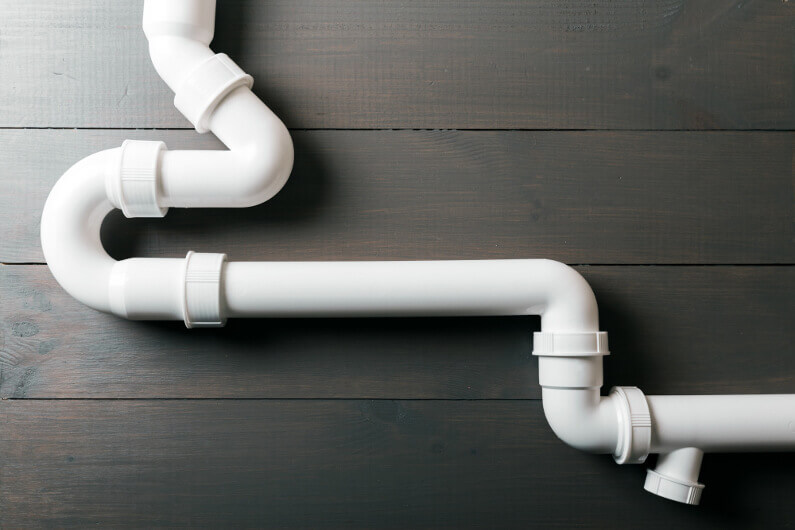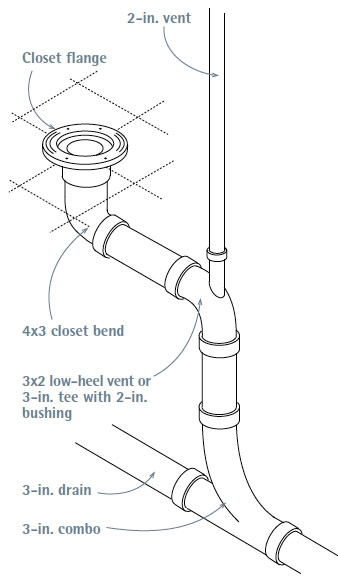The Necessity of Proper Ventilation in Residential Plumbing Systems
The Necessity of Proper Ventilation in Residential Plumbing Systems
Blog Article
Are you currently in search of facts on Essential Plumbing Vent Pipes: Understanding Their Role?

Appropriate air flow in plumbing systems is usually forgotten, yet it is important for preserving the capability and safety and security of your home's plumbing. Ventilation helps regulate air pressure, avoid the accumulation of dangerous gases, and ensure the effective removal of waste. In this guide, we will discover the value of appropriate pipes air flow, exactly how it works, and the advantages it gives your plumbing system.
How Ventilation Functions in Pipes Equipments
Atmospheric Pressure Policy
Correct ventilation keeps balanced air pressure within the pipes system. When water streams via pipes, it displaces air. Without sufficient ventilation, this variation can create adverse stress, bring about slow down drains pipes or siphoning of water from traps, which can trigger unpleasant smells to leak into the home.
Stopping Sewage System Gas Buildup
One of the most critical functions of plumbing vents is to avoid drain gases, such as methane and hydrogen sulfide, from building up within the home. These gases can present major wellness dangers and are very flammable. Vent pipes allow these gases to leave securely outside.
Assisting in Waste Removal
Ventilation helps in the effective removal of wastewater by avoiding airlocks in the drainage system. When air can flow freely with the vents, it enables water and waste to flow efficiently with the pipelines, reducing the danger of blockages and back-ups.
Advantages of Proper Air Flow
Enhanced System Performance
Appropriately ventilated plumbing systems run more effectively, with less clogs, faster draining pipes, and less pressure on the pipelines. This efficiency prolongs the life expectancy of the plumbing system.
Improved Air High Quality
By protecting against sewer gases from entering your home, appropriate air flow contributes to much better interior air quality, making your living atmosphere healthier and a lot more comfy.
Avoiding Water Damage
Appropriate air flow assists avoid water from being siphoned out of traps, which can result in drain gases going into the home and causing water damage with time.
Actions to Make Sure Correct Air Flow
Consulting Plumbing Codes
Constantly seek advice from local plumbing codes when designing or customizing your plumbing system. These codes offer the necessary standards for correct venting and ensure your system fulfills security criteria.
Routine Inspection and Upkeep
Regular examinations can help determine possible ventilation concerns before they end up being significant problems. Maintenance tasks, such as cleaning vent pipelines and looking for blockages, are necessary for keeping the system in good working order.
Specialist Installation
For new installations or significant modifications, it's smart to hire a specialist plumber. They have the know-how to guarantee the air flow system is appropriately created and set up according to code.
Recognizing Air Flow in Pipes
Ventilation in plumbing refers to the network of pipelines that permit air to stream through the drainage system. These vents offer several purposes, consisting of controling air pressure within the pipes, stopping drain gases from entering the home, and assisting in the smooth flow of wastewater.
Sorts Of Plumbing Vents
Key Stack Vent
The major pile vent, additionally known as the vent pile, is the key vent in a plumbing system. It expands from the main drain align via the roof covering, allowing gases to leave and fresh air to get in the system.
Branch Vent
Branch vents attach to the primary pile air vent and offer specific fixtures, such as sinks, bathrooms, and showers. These vents guarantee that each component has sufficient ventilation to work properly.
Air Admittance Valve (AAV).
An Air Admission Shutoff (AAV) is a one-way shutoff that permits air to get in the plumbing system without the requirement for a standard vent pipe extending via the roofing system. AAVs are typically used in renovations or areas where setting up a standard air vent is unwise.
Signs of Poor Ventilation in Pipes.
Slow Draining Fixtures.
If your sinks, tubs, or toilets are draining pipes gradually, maybe an indicator of bad ventilation. Poor air circulation can create a vacuum impact, making it difficult for water to drain pipes properly.
Gurgling Sounds.
Gurgling audios coming from drains are often a result of air being sucked via water catches as a result of unfavorable stress in the pipelines. This is a clear sign of not enough air flow.
Undesirable Smells.
Sewer odors inside your home are a warning that your plumbing system is not effectively ventilated. This can mean that sewer gases are not being appropriately aired vent outside, leading to potentially hazardous conditions.
Common Ventilation Mistakes.
Inadequate Vent Sizing.
Making use of small vent pipes can lead to inadequate air circulation and stress inequalities in the system. It's vital to utilize vents that meet the details demands of your pipes system.
Improper Vent Placement.
Positioning vents as well far from the components they serve can minimize their efficiency. Proper placement makes sure that air can move easily and successfully with the system.
Ignoring Code Needs.
Building ordinance supply certain standards for plumbing ventilation. Ignoring these codes can result in a system that fails to function correctly and might lead to pricey repairs or carcinogen.
Final thought.
Appropriate ventilation is an essential part of any kind of plumbing system, ensuring that it works efficiently and securely. By understanding the significance of ventilation, recognizing the signs of bad ventilation, and taking steps to preserve your system, you can stop pricey concerns and secure your home's air quality.
4 Things You Should Know About Your Plumbing Vents
What Plumbing Vents Are
Also called a vent stack, a plumbing vent is a vertical pipe attached to your drain line that runs through your roof. The plumbing vent pipe, or plumbing air vent, removes gas and odors from your plumbing system and allows fresh air to enter the pipes, helping the water to flow out of the drain pipes.
What Plumbing Vents Do
Plumbing vents have two basic functions. One of which is to allow unpleasant smelling wastewater and sewer gasses to escape your plumbing system instead of entering your home. Plumbing vent pipes are typically located on roofs, away from windows, to ensure the fumes exit the home completely.
The other function of the plumbing vent is to move fresh air into your plumbing system. This helps move water through every plumbing fixture in your house, like toilets and sink drains. Think of the way in which you need to let a little air into the bottle as you pour soda in order to make the drink flow smoothly.
Different Types of Plumbing Vents
True vent: This is the most common vent option. In simplest terms, a true vent is a vertical pipe attached to your drain line that exits through the roof. They often function as the main vent that other fixtures can connect to. Re-vent pipe or auxiliary vent: Attached to the drain line near specific plumbing fixtures, re-vent pipes run up and over to connect to the main vent. Common vent: Two plumbing fixtures installed on opposite sides of a wall are typically tied into the vent stack using something known as a sanitary cross. Wet vent: This venting option operates as a drain pipe and a vent at the same time. Wet vent drainage systems drain water from one fixture while venting the air from another. Although they’ve been used for over 100 years, wet vent systems have only recently been added to the plumbing code in many areas. If you’re planning on installing one in a bathroom remodel, make sure you check your local code prior to construction. Loop vent: For free-standing fixtures like kitchen island sinks, loop vents are ideal. These vent pipes run under the floor, rise from the P-trap, and create a loop inside the cabinet sink. Air admittance valve: An AAV is a one-way mechanical valve typically installed at the site of the plumbing fixture. AAVs allow venting to occur without having to tie into a larger venting system. They’re ideal for venting fixtures where you aren’t able to easily connect to an existing vent system. Common Plumbing Vent Issues
Although vent pipes typically don’t have water flowing through them, they’re still subject to many typical plumbing issues. For example, clogs are one of the most common problems associated with sewer vent pipes. If your vent pipe gets clogged, all of your plumbing fixtures tied into the vent stack will be affected.
A sink with a slow drain that bubbles and gurgles or a strong sewage smell around your toilet are both indicators that your toilet vent pipe is clogged. Because most vent pipes exit through the roof, old leaves, twigs or even a bird’s nest could be clogging the pipe.
Clogs in your vent pipe system cause a buildup of negative pressure, meaning that water won’t be able to flow out of your home very well. It’s similar to putting your finger over the opening of a straw to trap water inside. When you remove your finger, the water is able to flow out of the straw.
If you suspect you have any blockage in your vent, make sure you have a professional come examine the situation. Left unchecked, a blocked air vent can lead to other costly repairs, like leaks and sediment buildup.
Under Pressure
Pipe vents are essential aspects of a home’s plumbing system. Owning a home means learning about all sorts of things you never put much thought into before. But by understanding as much as you can about the important systems of your home, you can keep those budgets intact and those anxiety levels low.
https://www.homeserve.com/en-us/blog/home-improvement/plumbing-vents/

We were introduced to that article about What Is A Plumbing Vent & How Do They Work? from a good friend on our other website. If you liked our post please consider to share it. I thank you for your readership.
Find Out More Report this page